Lindbergh
K2CAM Celebrates the flight of Charles Lindbergh on May 20th 1927
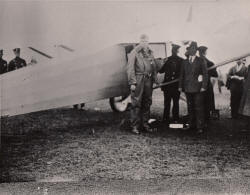
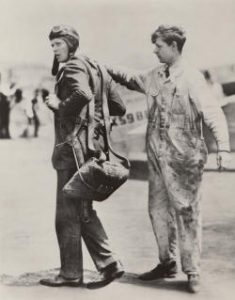
Charles Lindbergh took off in the Spirit of St. Louis. at 7:52 AM on the morning of May 20th, 1927. Departing Roosevelt Field in Garden City, Long Island, New York, he flew non-stop for 33 1/2 hours, arriving at Le Bourget Airport, Paris, France, at 10:22 PM Paris time. We will be on the air from 9 AM until 4:30 PM.
The special events station will operate under the call sign of the Cradle of Aviation Museum, K2CAM, and will operate in conjunction with the Long Island Mobile Amateur Radio Club.
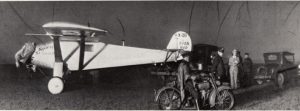

The Flight Path
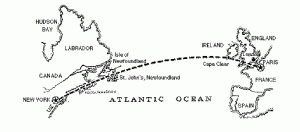
QSL Information
If you would like to request a QSL card, please send a SASE (#10 envelope). Foreign stations please include $2.00 USD. Send to:
Cradle of Aviation Special Event
C/O LIMARC
P.O. Box 392
Levittown, NY 11756
A Brief History
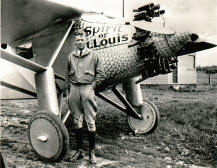
Information Sheet
- The Cradle of Aviation Museum, located in Garden City, New York, was opened in May, 2002 on the site of what had once been Mitchel Field, one of our country’s first airfields.
- The museum is one of the foremost air and space museums in the world, containing nine galleries and over 72 historic aircraft and spacecraft including an Apollo lunar module.
- Long Island was geographically a natural airfield. The Island itself is ideally placed at the eastern edge of the United States, at the western edge of the Atlantic Ocean, and adjacent to America’s most populous city. This made it the ideal focal point for most transatlantic and transcontinental flights.
- The central area of Nassau County, known as the Hempstead Plains, was the only natural prairie east of the Allegheny Mountains. This proved to be an ideal flying field, treeless and flat, with only tall grasses and scattered farm houses. The Hempstead Plains were to be the scene of intense aviation activity for over fifty years.
- By 1896 the first recorded aircraft flight took place on Long Island, when a Lilienthal-type glider was flown from the bluffs along Nassau County’s north shore.
- By 1910 there were three airfields operating on the Hempstead Plains
- Long Island is home to many of the most important achievements in aviation:
- The first trans-continental flight in 1911 took off from Long Island
- Also in 1911, the first official air mail flights in the United States were flown from Garden City to Mineola
- Long Island was home to the first flight school in the United States
- World War I pilots were trained at Mitchel Field
- In 1919 the first flight across the Atlantic Ocean was made when a Navy Curtiss flying boat, (built in Garden City), the NC-4, flew from Long Island to England with two stops in between. The Atlantic had been conquered by air at last.
- Later in 1919 the British airship R-34 also completes a round-trip crossing of the Atlantic from England to Long Island.
- Charles Lindbergh’s non-stop flight across the Atlantic Ocean began at nearby Roosevelt Field
- In 1929 the first “blind” flight was also made on Long Island when Jimmy Doolittle took off, flew and landed a plane solely on newly developed instruments at Mitchel Field.
- In 1937 the first regular commercial transatlantic airline service in America was begun at Port Washington as huge Pan American Martin and Boeing flying boats departed and arrived regularly at Manhasset Bay.
- Thousands of World War II planes were built here
- Grumman, founded in 1930, produced primarily Naval biplane fighters before the war, and during World War II, their Wildcat, Hellcat and Avenger proved to be outstanding Navy fighters and bombers. In fact, most of the Japanese aircraft shot down in World War II were shot down by Grumman planes.
- From the 1950’s through the 1980’s Grumman aircraft such as the Panther, Tiger, Intruder, Hawkeye, and Tomcat continued to dominate the Naval aircraft inventory.
- Republic, founded in 1931, built over 15,000 P-47 Thunderbolts during World War II, the Army Air Corps’ outstanding mainstay fighter in Europe
- Republic also turned to jet fighter-bombers as they produced the Thunderjet, and in the 1950s the huge Thunder chief. These aircraft also saw a great deal of combat in Korea and Vietnam.
- In the 1970s Republic produced the A-10 Thunderbolt II, flown in the Gulf War.
- The lunar modules, which landed astronauts on the moon’s surface, were built by Long Islanders a few miles down the road at Grumman
- The museum’s commitment to children has been recognized by the local education community. The Cradle serves as the home of the first Museum Magnet School on Long Island in collaboration with the Westbury and Uniondale School Districts. The museum is also a host and teaching resource for Elementary STEM Partnerships with a number of local districts.
About
The Long Island Mobile Amateur Radio Club, W2VL, and The Cradle of Aviation Museum, K2CAM, are both 501(c)(3) not-for-profit corporations. Contributions to either are fully tax deductible.
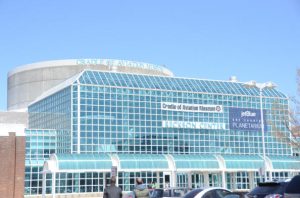
Links
Contact
Cradle of Aviation Museum
Charles Lindbergh Blvd
Garden City, NY 11530
Long Island Mobile Amateur Radio Club
P.O. Box 392
Levittown, NY 11756
